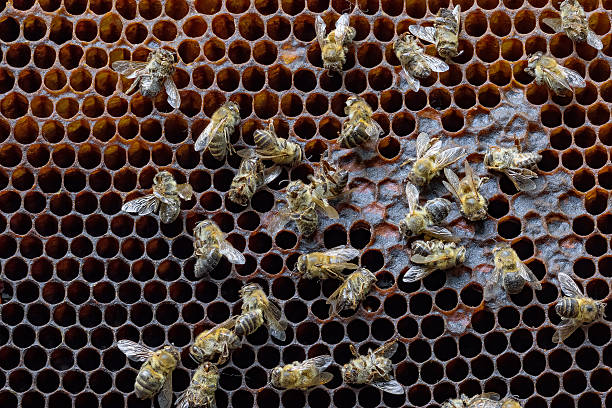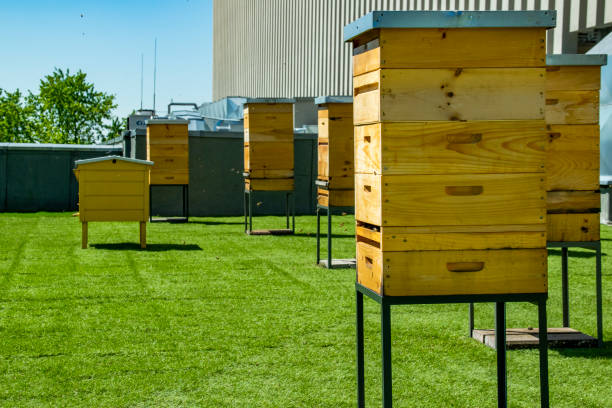Green Beekeeping: The New Way To Save The Planet
Beekeeping is the profession of keeping and breeding bees, while green beekeeping is a natural, sustainable way of breeding bees and producing honey.
Essentially, beekeeping is the practice of managing honey bee colonies in order to collect the honey and other products that the hive produces.
This practice has been around for centuries and has been used for many purposes – it’s an ancient art that has been passed down from generation to generation.
It is one of the most ancient agricultural practices and it has been used to produce honey, royal jelly, pollen, propolis, bee venom, and wax.
Beekeepers provide a valuable service as they help pollinate crops, produce honey, and produce beeswax for candles. In return, they get their own supply of sweet liquid gold – honey.
The decline of bees has been linked to the decline of honey bee populations.
With the overuse of pesticides in modern farming, it has been shown that this is one of the main reasons for the decline in bee populations.
Using pesticides to kill pests is one of the leading reasons why green beekeeping techniques, such as those that avoid pesticides, are starting to become more popular.
While green beekeeping can take some time to perfect, it is ultimately a more environmentally friendly and sustainable practice for harvesting honey that has many benefits.
This beekeeping practice is easier to maintain as there are fewer chemicals used in green beekeeping than in traditional beekeeping.
Generally, beekeeping can take up a lot of time and energy, but it can also be very rewarding. This article will provide you with a complete guide to green beekeeping for the benefit of the environment
Traditional Beekeeping
Beekeeping is the practice of creating honey and beeswax from the nectar and pollen gathered by bee colonies. It is the practice of keeping honeybees in order to produce and harvest honey.
It is a very old practice, which has been done for thousands of years. It was not until the 18th century that people started to do it on a commercial scale.
It was at this time that beekeepers started to produce honey in large quantities.
Beekeeping is one of the oldest forms of agriculture, with evidence suggesting that it was practiced in ancient Egypt.
Beekeeping has been a long-standing tradition in Egypt. For over four thousand years, Egyptians have created beehives from pipes of clay or Nile mud, sometimes stacking them on top of one another.
The word “apiculture” comes from the Latin apis, which means bee. Beekeeping involves the construction and maintenance of beehives and honeycombs, as well as harvesting honey and beeswax.
Traditional beekeeping is a way to keep bees without using any modern equipment or technology like electric lights or chemical treatments.
It is a form of subsistence farming that relies on natural conditions such as temperature, rainfall, and wind patterns to regulate the hive’s population.
The decline in the beekeeping

Beekeeping has been around for centuries and is a time-tested way to produce honey, wax, and other bee products. However, beekeeping can be more than just an efficient way to make money.
It is a great way to make a living, and earn some extra income. It is also an environmentally friendly and sustainable practice for harvesting honey, which can be done in your backyard.
When you keep bees in the traditional way, you are not only providing them with a home but also ensuring their survival.
In order to maintain healthy bees and ensure they have enough food sources, we must provide them with orchards of flowering plants and trees.
This will also help pollinate our crops and improve our local ecosystem.
However, there have been significant changes to the beekeeping industry over the last 20 years, including fluctuating honeybee colony numbers and declining honey per-colony yields.
About 30-50% of bee colonies in the US have been lost during winter months, which is a significant problem. In 2006, a 42 years beekeeper, reported losing 90% of his 3,000 hives due to this phenomenon.
According to the U.S. National Agricultural Statistics, the number of honey bees in the United States over the last 60 years has declined drastically. Now, there are only 2.4 million hives, a decrease of 60%, compared to 1947 when there were 6 million hives.
This decline has many factors including pesticides, habitat destruction, and climate change.

For these reasons, urbanized areas are more committed than ever to sustainability goals- which means that there is a host of green initiatives being made to promote biodiversity and environmental justice
This has led to an increase in greening activities.
One example of this would be a green beekeeping practice gaining popularity in recent years, as an answer to the biodiversity crisis.
What is green beekeeping?

The main goal of beekeeping is to ensure that the honeybee population thrives, which means hives should be moved often enough so bees can get new territory to explore, but not so much that they stop producing honey.
Green beekeeping is an environmentally friendly and sustainable practice for harvesting honey.
This is a good idea because it’s more sustainable, organic, and environmentally friendly than traditional beekeeping practices.
Green beekeeping is a sustainable and organic way to keep bees. It is a practice that has been around for centuries in some parts of the world.
In the past few years, it has gained popularity in North America, Europe, and Australia.
The practices of green beekeeping have been used for centuries in some parts of the world. However, they are new to North America and Europe where they have grown in popularity over recent years.
Green beekeeping is a sustainable practice that also supports organic farming and organic beekeeping practices.
It promotes natural methods of keeping bees so as not to harm them or their environment while still producing honey for human consumption.
In contrast with traditional beekeeping practices, green beekeepers do not:
- do not use chemical treatments on their hives or insecticides during hive inspections
- do not feed their bees sugar water or antibiotics to fight disease; they don’t use smoke when inspecting beehives
- do not machines and power tools to remove honey from hives, instead use natural labor
- do not build queen cages, and they don’t use electric or gas-powered equipment.

There is no agreed-upon definition for what qualifies as “green” beekeeping practices. The following are common practices that some would consider green:
- Avoiding chemicals in order to keep bees safe and healthy while also protecting natural resources. Green beehives are completely closed off to the outside world so no pesticides get in the hive and bees can produce honey without exposure to any chemicals.
- Hives are allowed to forage naturally for food, usually wildflowers and other plants.
- A beekeeper does not remove honey from the hive themselves but instead instructs the bees to have their own natural process of creating honey.
- Bees naturally build wax comb in a frame and fan it out in order to create a cavity that is filled with honey. It will take anywhere from two-three weeks to six-seven weeks before they are able to produce honey without human intervention.
- Using old-fashioned tools like comb honey instead of extracting liquid honey from beehives that are not used for production or thickening combs from beehives that have been used for honey production and turning the bees loose to build their own comb hive as a home instead of robbing them of their home.
Main Benefits of Green Beekeeping
Green beekeeping is the process of keeping bees without using chemicals. Green beekeepers are more concerned with their honeybees’ health, the environment, and sustainability than they are with honey production.
Green Beekeeping has many benefits:
- It is environmentally friendly
- It can help people who have a lot of allergies or sensitivities to chemicals
- It can help people who suffer from asthma or other breathing problems
- It can be a great opportunity for small-scale farmers and backyard gardeners
- It does not require expensive equipment
- Less chance of disease transmission to the hives
- No risk of chemical contamination from pesticides or herbicides used in commercial agriculture
- Preserves natural landscapes and habitats for other insects and animals
Conclusion: Why You Should Invest in Green Beekeeping Today
Green Beekeeping is a new and innovative way to produce honey without harming the environment. Honeybees are essential for our environment because they pollinate plants, flowers, and trees.
In the past, beekeeping was a dangerous and difficult job that required many hours of work. But today, Green Beekeeping has changed all of that.
Green beekeeping is an approach to beekeeping that aims to keep the environment safe for both bees and humans. It was created in response to the decline in bee populations due to pesticides, pollution, lack of natural habitat, disease, and other factors.
Green beekeeping is a great investment because it provides many benefits to people and to the environment. It helps fight climate change by reducing greenhouse gas emissions and producing more food for people. It also reduces water usage, which means less pollution in rivers and streams. Lastly, green beekeeping produces higher-quality honey that tastes better than regular honey.


